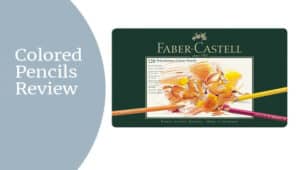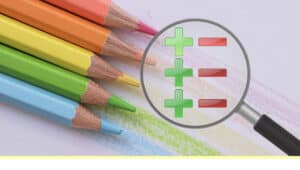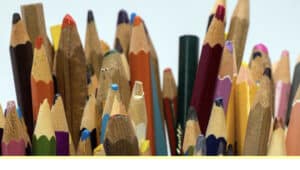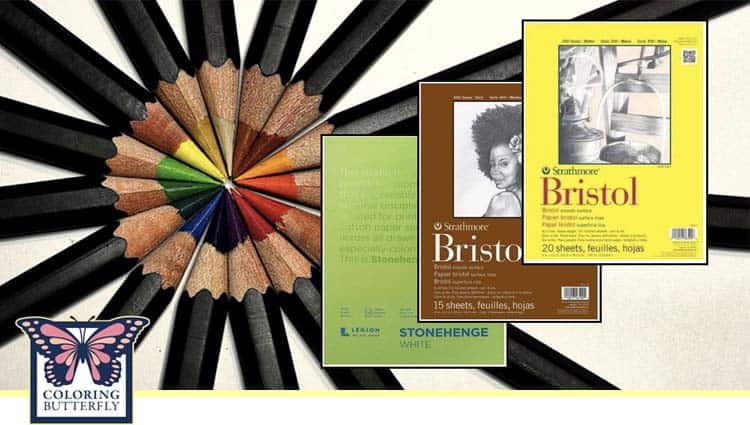
A guide to finding the best-colored pencil paper for adult coloring.
When choosing a paper for coloring and artwork, it becomes essential to choose the right paper for the media (e.g., colored pencils, markers, gel pens, pastels, ink, and oils). This article is about colored pencil paper. What it is, why it matters, and how to choose the right paper for your next adult coloring adventure/project.
Choosing Colored Pencil Paper
Table of Contents
- The Texture of Colored Pencil Paper
- Why the Paper Finish/Texture Matters
- Difference Between Cold- and Hot-press Paper
- Essential Terms Paper Related to Paper
- Best Paper for Colored Pencils
- Characteristics of Coloring Book Paper
- Colored Pencil Tips for Paper
Other resources. Check out other supporting resources on ColoringButterfly.com that you might enjoy.
- Buying A Coloring Book: Everything You Need to Know (Guide)
- Adult Coloring Book Paper: Can It Make A Difference? (See How)
- Art & Coloring Paper Specifications: So What? (The Answers)
- Want Colored Pencil Paper? 13 Top Choices for Adult Coloring
- Which Coloring Books have Poor-Quality Paper? (2 Tips for Amazon)
- Buying Colored Pencils? Everything You Need Know (Guide)
Introduction. You have carefully and excitedly chosen your first set or maybe your fifth set of coloring pencils. Each set of pencils comes with its unique set of properties. The pencils will perform differently on various types and grades of paper, making all the difference in your coloring experience.
The best paper for colored pencils is smooth with a bit of texture, allowing the colored pencil core to lay down more quickly. What does that mean?
Throughout the remainder of the article, I would like to expand on the various types of paper we can use for colored pencils, the meaning of vocabulary used to describe paper and how to choose the right paper to fit your adult coloring project. [TOC]
The Texture of Colored Pencil Paper
Paper comes in a variety of formats that are suited for coloring, artwork and more. Colorists/artists use various media types, including graphite, charcoal, watercolor, inks, colored pencil and pastels. Formats refer to how the paper is bound, including spiral or glued/gummed pads, sketchbooks, and blocks.
Types of paper for colored pencils. There are a variety of paper types that are well-suited for colored pencils. They include
- Bristol paper/board. Bristol board comes in a smooth or Vellum texture surface paper. The paper comprises at least two or more layers of paper glued together under pressure to form a robust drawing surface. It is made of acid-free wood pulp. Bristol paper is best for colorists/artists looking to work on a white background. The heavier weight allows for multiple layers of colored pencil. Best for dry media work only.

- Toned paper. Toned paper comes in a variety of colors, such as a variety of grays, browns and muted hues. These toned papers have a smooth side and a rougher side. The rougher side is excellent for pastels. Toned paper is preferred by many colored pencil colors/artists because of the possibilities that drawing on a mid-tone background brings. The mid-tone background saves time by preventing the artist from having to render the intermediate color values themselves. Toned Sketch is best for dry media only. Toned Mixed Media is best for artists who want to use watercolor pencils or add watercolor and other wet media to their pieces.
- Colored pencil paper. This paper provides a clean white, toothy surface ideal for various colored pencil techniques. Even coverage can be smooth, and the durable surface stands up to repeated erasures and reworking. The heavy weight combined with the vellum surface allows for the application of multiple layers.
- Mixed Media Paper. Mixed Media paper is made with a vellum drawing finish. The surface is suited for dry media, but these papers are heavy-weight and made for watercolor washes and other wet media. With its firm surface and heavy weight, you can mix your colored pencils with other media. [TOC]
Why the Paper Finish/Texture Matters
What is paper finish/texture, and why does it matter? Yes. Paper finish is often referred to as texture or surface roughness. The characteristics of paper texture are referred to as “tooth.” The rougher the paper, the more tooth it has. A very smooth paper may have difficulty capturing color, while rougher paper can capture too much color. There are three types of paper surface texture Smooth, medium and rough. They include:
- Smooth texture paper. The smooth paper has a tiny if any, noticeable texture/tooth. Smooth is sometimes referred to as hot press. Applying a colored pencil will cover the paper with a light touch/minimum effort. Smooth paper is considered suitable for drawing but not for coloring with many layers, and smooth paper is a good choice for beginners using colored pencils.
- Medium texture paper. The medium paper surface has a texture/tooth (peaks and valleys) that is more noticeable than smooth but not as noticeable as rough paper. Medium is sometimes referred to cold press, vellum finish or regular. When you lay down a light first layer, you will notice that the color laid down better on the peaks than the valleys (e.g., the tooth). You will need to apply more layers to fill in the tooth of the paper surface. Medium paper is the traditional choice for colored pencils.
- Rough texture paper. Rough paper has a noticeable texture/tooth (peaks and valleys). When you lay down a light first layer, you will notice that the color is on the peaks but not in the valleys. It tends to wear away the pencil lead quicker, and you will need to apply more layers with heavier pressure. [TOC]
Difference Between Cold- and Hot-press Paper
What is the difference between “cold press” and “hot press” paper? “Hot press” and “Cold press” paper are accepted ways of describing the surface/texture of the paper.
- The cold press refers to a rough medium-like finish/texture. This paper has the characteristics of being smooth enough for multiple layers and detailed drawings.
- The hot press refers to the smoothest paper. This paper gets its name from paper sheets run through a heated roller to flatten the paper. This paper is designed more for high detail than multiple layers of color. [TOC]
Choosing Smooth/Texture Paper
In adult coloring, you may find a brand and type of paper that you like and will use repeatedly. In this section, I would like to go into a little more depth regarding paper texture and the criteria you can use to determine if the paper is right for you.
When is smooth finish/texture paper a good choice? Smooth finish paper has the least texture/tooth (peaks and valleys) of any paper. Smooth is sometimes referred to as hot press. The paper is considered ideal for drawing and blending. When coloring on smooth paper, it is much easier to fill in the surface peaks and valleys with fewer and lighter applications of color. While smooth paper is easier to cover with color, you will not be able to have many layers. When applying/laying down color, it is good to have a soft hand and gradually build color. Using heavy pressure and the solvent is more likely to damage the paper. Smooth paper is a good choice when you
color. While smooth paper is easier to cover with color, you will not be able to have many layers. When applying/laying down color, it is good to have a soft hand and gradually build color. Using heavy pressure and the solvent is more likely to damage the paper. Smooth paper is a good choice when you
- Usually, don’t use many layers
- Want seamless blending
- When you use heavy pressure with coloring
- I like to draw very detailed drawings
- Soft is a good choice for beginners
Recommendation: Smooth paper is a good choice for beginners using colored pencils. [TOC]
Choosing Medium Finish/Texture Paper
When is medium finish/texture paper a good choice? The medium finish paper surface is characteristic of smooth and rough textured paper. Medium is sometimes referred to cold press, vellum finish or regular. The paper is ideal for drawing, applying layers of color with lighter pressure and limited solvent use for blending. The paper allows for layering and solvent and a very detailed drawing surface. The paper is also known for accepting water-soluble colored pencils and watercolors. Medium paper is a good choice when you
- Like to use apply multiple layers
- Like to use detail when drawing
- Like to progressively applying lighter to heavier pressure coloring/drawing
Recommendation: Medium paper is the traditional choice for colored pencils. [TOC]
Choosing Rough Finish/Texture Paper
When is rough finish/texture paper a good choice? Rough finish paper is best known for having noticeable texture/tooth (peaks and valleys). The rougher the texture/more tooth a paper has, the more layers it will take. The roughness makes blending more difficult. A rough texture paper is excellent for solvents. The rougher the paper texture is, the more colored pencil core pigment is required to fill in the paper’s surface (peaks and valleys). This will require you to use more pressure in coloring or solvent for blending; you will see specs of white (paper color), also known as flecks showing through your color application. Rough texture can be hard to draw on. Routh texture paper is a good choice when you
- Don’t want to use many layers
- Usually, apply heavier applications when coloring
- When you like to draw detailed drawings
Recommendation: Rough is a good choice when using pastels and charcoals. When you use pencils, you will notice how quickly the pencil’s lead will diminish because of the rough tooth, and the paper will excessively absorb markers. [TOC]
Essential Terms Paper Related to Paper
What are some essential paper terms to remember? In coloring, you are going to be introduced to a variety of terms describing paper. The terms directly impact the brand of colored pencils you use and how they respond to color, layering, blending and more. Here are a few to remember
- Paper tooth/texture. Paper tooth is the surface/texture (peaks and valleys or surface roughness) of the paper.
 Another way to describe “tooth” is the roughness and smoothness of the paper. The rougher the paper, the more tooth it has. Colored pencil responds differently to the tooth of the paper. There are three types of paper surface texture. They include:
Another way to describe “tooth” is the roughness and smoothness of the paper. The rougher the paper, the more tooth it has. Colored pencil responds differently to the tooth of the paper. There are three types of paper surface texture. They include:
-
- Smooth finish/texture paper. The smooth paper has a tiny if any, noticeable texture/tooth. Applying a colored pencil will cover the paper with a light touch/minimum effort. Smooth paper is considered a good paper for drawing but not for coloring, where many layers are needed, and smooth paper is a good choice for beginners using colored pencils.
-
- Medium finish/texture paper. Medium paper surface has a texture/tooth (peaks and valleys) that is more noticeable than smooth but not as noticeable as rough paper. When you lay down a light first layer, you will notice that the color laid down better on the peaks than the valleys (e.g., the tooth). You will need to apply more layers to fill in the tooth of the paper surface. Medium paper is the traditional choice for colored pencils. [TOC]
-
- Rough finish/texture paper. Rough paper has a noticeable texture/tooth (peaks and valleys). This type of paper When you lay down a light first layer, you will notice that the color is laid down on the peaks but not in the valleys. You will need to apply more layers with heavier pressure.
-
- Paper weight (GSM). In the coloring book and recommendations for coloring paper, you will see the term “pounds (lb)” and “gsm (grams per square meter).” The thicker the paper stock is, the higher the weight will be. A closer look.
-
- GSM. No matter the size (length and width), the weight measurement is always taken based on a square meter sheet. For example, a typical office paper used in a copier or printer would be around 90gsm. [TOC]
- Pounds (lbs). Pounds are determined by how much a ream of uncut paper weighs. Typically, 500 sheets of paper make up a ream, and that paper is weighed before being cut down to smaller sizes (such as a letter or legal). That weight is what is used when identifying and categorizing the product.
- Size. Size refers to the length and width of a sheet of paper. Paper size is commonly measured in inches (used in the U.S.) and centimeters (used worldwide). The most common paper sizes/formats are
-
- Letter (8.5 × 11 inches; 219.9mm X 279.4mm)
- A4 (8.3 × 11.7 inches; 210 mm x 297 mm)
- Archival/longevity. Archival that the paper is acid-free and should be made of groundwood, unbleached pulp and not contain optical brightening agents. Alkaline buffers are often added to wood cellulose to counter any trace of acid remaining, making it more archival. This characteristic is essential for lasting a long time without yellowing or
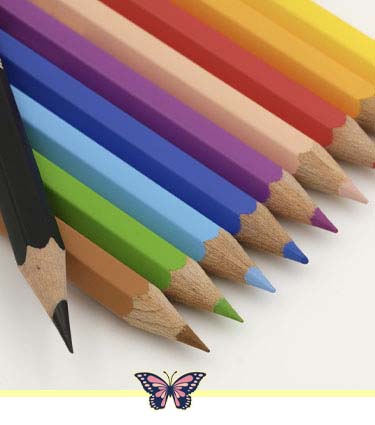 fading and is likely to be acid-free. [TOC]
fading and is likely to be acid-free. [TOC]
- Opacity. Another feature to consider when purchasing paper is the opacity of the sheets. This refers to how transparent or opaque the paper is. The opacity of a sheet of paper is measured on a scale of 0 to 100. A sheet that measures 0 is transparent, while 100 would be a completely opaque sheet. Different opacities will have different uses; for example, highly transparent sheets can be used for tracing paper.
- Acid-free paper. Acid-free paper, sometimes referred to as ‘Archival paper,’ can be naturally acid-free or neutralized in manufacturing. Using acidic paper for projects like photography, art, certificates and more introduces acid into items and potentially damages them. Acid-free paper is used when art or documents require a longer life without becoming yellow or breaking down. Acid-free papers, which can last up to 1000 years, come from
-
- Acid-free wood pulp cellulose paper was purified to remove lignin and acids
-
- Japanese paper is made from naturally acid-free fibers from the bark of specific trees, such as Kozo.
-
- Cotton fiber (also known as rag) paper which is also naturally acid-free
- Blocks. This refers to pads of paper glued on all four sides. Colorists/artists can work on the paper without wrinkling as they become more saturated with watercolor. Once dry, the sheets can be removed from the pad with a craft knife. [TOC]
- Bristol Paper/Board. Bristol board comes in a smooth or Vellum texture surface paper. The paper comprises at least two or more layers of paper glued together under pressure to form a robust drawing surface. It is made of acid-free wood pulp and is commonly best-suited ink or dry media. Many colored pencil artists have gravitated towards a smooth Bristol surface because of the fine detail that can be achieved without the texture of the paper interfering. Choosing a smooth or Vellum Bristol surface is a personal preference. So-called because in early European papermaking, the ply sheets would be sent to Bristol, UK, to be glued together.
- Cold Pressed. Paper is made by pressing the sheet through cold metal rollers, and the paper has a slight texture to it. It is the most popular watercolor paper surface to work on because it is well-adapted to many painting approaches. Cold-pressed paper tends to be more absorbent than hot-pressed paper, and NOT is another term used for cold-pressed.
- Hot Pressed. The surface of the hot pressed paper has the least textured surface. During production, the paper is pressed between hot metal rollers. The absence of texture makes it suitable for fine detail, as in pen and ink drawings. Hot-pressed paper tends to be the least absorbent of all textures. [TOC]
Best Paper for Colored Pencils
Based on my experience in adult coloring, I am looking for a smooth medium/vellum finish paper surface with enough texture/tooth (peaks and valleys) to grip my colored pencil evenly. The paper category is referred as
- Bristol Vellum finish/texture. I have written an article entitled, “Want Colored Pencil Paper? 13 Top Choices for Adult Coloring.”
- Bristol Vellum finish/texture. When we talk about Vellum finish/texture, we are not talking about Vellum paper (often used for invitations/tracing paper). Bristol, also referred to as “Bristol Board) is a heavier/thicker paper comparable to cardstock and is known to be inexpensive. The paper’s thickness comes from two or more sheets of paper being glued together and comes in white and is available from various manufacturers.
- Bristol comes in smooth or Vellum surface. Smooth surfaces are excellent for pen & ink, mechanical pencils, airbrushes, and markers. There is little to no tooth, making these surfaces great for creating fine lines, detail drawings, or marker drawings. The smooth surface is suitable for the beginner and colorist/artist using colored pencils. The following is a video from Strathmore explaining more about vellum surfaces [TOC]
The vellum surface (more tooth) is an excellent choice for colored pencils. The surface has peaks and valleys which grab dry media such as graphite. The smooth-like texture can take multiple layers of colored pencil with little or no buildup. With a vellum surface, you get more even shading and deeper, and it can withstand minimum solvent blending. Vellum surfaces are excellent for graphite, colored pencil, charcoal, pastel, and crayon. Vellum surfaces are excellent for graphite, colored pencil, charcoal, pastel, and crayon. The surface has peaks and valleys which grab dry media such as graphite.
If you use a standard U.S. paper size, ensure that your printer is set to “U.S. paper sizes.” If you use a European paper size, ensure that your printer is set to “A4 paper.” You may need a straight slot in your printer when printing heavier paper. If you are using a printer at home, try to stay with 67 lb/147gs, 80 lb/225 gsm or 100 lb/270 gsm. [TOC]
Top Six Choices for Colored Pencil Paper
When choosing a paper for coloring and artwork, it becomes essential to choose the right paper for the media (e.g., colored pencils, markers, gel pens, pastels, ink, and oils). Choosing the right paper size is essential in the paper printing process. For an in-depth review of the top colored pencil paper, see the article entitled “Want Colored Pencil Paper? 13 Top Choices for Adult Coloring.”
My choice of Bristol, in order of preference, is:
- Springhill Vellum. Springhill Vellum paper is specially made for printing. The standard paper used for colored pencils is 80 lb/225 gsm, and there is also 67 lb/147 gsm.
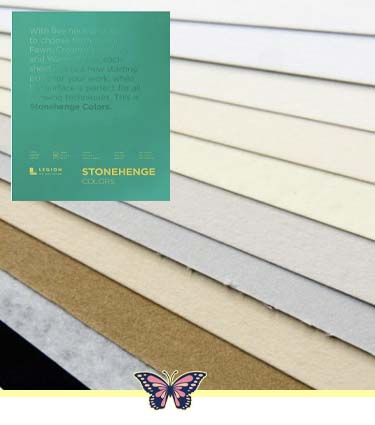
- Neenah Cardstock Bristol Vellum. Neenah Cardstock Bristol Vellum paper is specially made for printing and compatible with Inkjet and Laser printers. The standard paper used for colored pencils is 67 lb/147 gsm.
- Strathmore 300 Bristol. Strathmore 300 Bristol paper has a medium tooth and a 100 lb/270 gsm weight in pads, sheets, and rolls. It is compatible with both Inkjet and Laser printers.
- Strathmore 400 Bristol. Strathmore 400 Bristol paper is commonly available in 2-ply (100 lb/270 gsm) as well as 3-ply (150 lb/405 gsm) and 4-ply (200 lb/540 gsm).
- Strathmore 400 Series Colored Pencil Paper. Strathmore 400 Series Colored Pencil Paper has a vellum surface. This paper is 100LB (163 gsm) and has a medium tooth. This paper is ideal for colored pencils. It’s acid-free but recommended if you use wet media or solvents.
- Legion Stonehendge Paper. Legion Stonehenge Paper is 100% cotton and has a smooth feel. The paper is sturdy and has enough tooth/texture to take multiple layers of colored pencil with little or no buildup. It can withstand minimum solvent blending. [TOC]
Reading Paper Specifications
How do you read paper labels and paper pad descriptions? Choosing a quality paper can significantly affect the results of a particular coloring, drawing, and painting. Every ream/pad of paper includes information on the packaging/cover to help you identify and choose the right paper for your intended project. See the following article, “Art & Coloring Paper Specs: Know the Meaning (Before You Buy),” for details about how to read paper descriptions found on the side/top of reams of paper and on top of pads of paper. [TOC]
Inkjet and Laser Paper Printing Considerations
Can you run watercolor, mixed media, Bristol and other art papers through an Inkjet or Laser printer? Yes and no. The manufacturing process manufacturers will add any ingredients to the paper that are designed specifically for Inkjet or Laser printing properties. Sheets such as watercolor and Bristol are thicker and are not well suited for bottom tray print because the paper will jam when printing. To print, your printer will need a strait though pass-through for best success. [TOC]
Characteristics of Coloring Book Paper
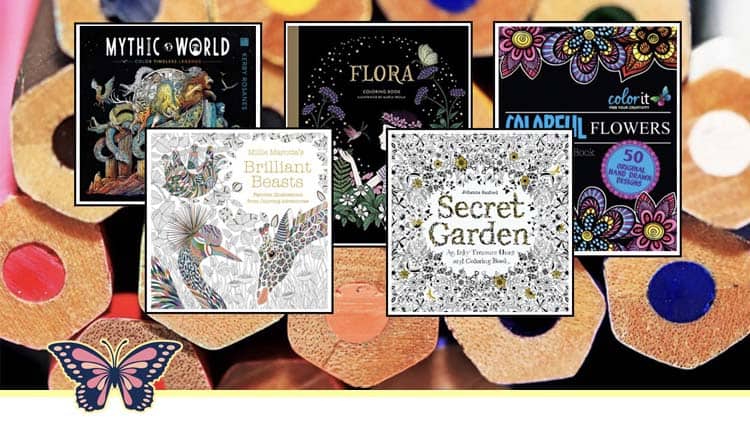
What are the characteristics of coloring book paper? All coloring books are not the same when it comes to paper. For most adult coloring enthusiasts, paper is an often-overlooked coloring book feature. The paper defines the type of coloring application and technique you can use within the coloring book. For many coloring books, the paper tends to be a standard basic paper, while other coloring book publishers will spend months searching for the perfect paper that includes color, thickness, and paper stock/texture.
Paper is usually defined with the following properties/characteristics.
- Finish. The finish is related to the roughness or texture. There are three main categories of texture: smooth, medium, and rough. Each of the paper categories for papers that are designed for specific uses and media (e.g., colored pencils, markers, gel pens).
- Paper weight. Paper weight is not how much the paper weighs; instead, it defines the thickness of the paper. The thicker the paper, the more a specific medium (e.g., wax, paint) can absorb/handle. If you want to color many layers, you will want a higher-weight paper. A person who will be doing a sketch could suffice with a lower-weight paper.
- Fiber. Fiber denotes the material that makes up the paper. There are two types of fiber “cotton” and “cellulose.” Cotton is made from bamboo, flax, jute, and hemp. The paper is known for lasting longer and has a higher cost.
- Sizing. Sizing is not the length and with of a sheet of paper; instead, it refers to how resistant the paper is to water. The higher the size, the less moisture and pigment will be absorbed. This characteristic helps the paper to have a level of absorption that is perfect for the medium but not causing it to fall apart in time.
- Dimensions. Dimensions are the length and width of a sheet of paper in a ream of paper, a pad of paper, a coloring book, and more. Coloring books come in a variety of sizes.
- Form. Paper comes in different forms (e.g., single sheets, sketchbooks, pads, paper rolls, watercolor blocks, and boards). [TOC]
How does coloring paper affect colored pencils? In the coloring experience, we spend a lot of time choosing our colored pencils, learning coloring techniques, improving our coloring skills, and then deciding which coloring books we want to spend our time with. [TOC]
How often have you thought about the paper in the coloring book? Paper is an essential factor in deciding the coloring experience’s outcome. For example, if you use Prismacolor Premier, a waxed-base colored pencil on paper that does not accept wax-based cores very well, the color can be muted. You will lose Prismacolor Premier’s unique color characteristics. [TOC]
Types of Coloring Book Paper
What are the types of coloring book paper? The grade of paper in coloring books can range from photocopy to artists’ grade paper. Each grade of paper has a surface texture that has unique qualities and responds differently to coloring media (e.g., colored pencils, watercolor, gel pens, markers) and technique/style. See the articles entitled “Adult Coloring Book Paper: Can It Make A Difference? (See How)” and “Which Coloring Books have Poor-Quality Paper? (2 Tips for Amazon).” The thicker the paper, the less likely it is that inks will bleed onto the adjacent pages.
The following are examples of the papers used in coloring books.
- Amazon KDP Paper. Many of the coloring books on Amazon come from Amazon KDP. KDP is a service that helps new authors, artists, and illustrators self-publish coloring books. I have found some incredible artists who publish on Amazon KDP paper. The paper used in KDP paper is not very good; it can be very frustrating for coloring.
- Joanna Basford coloring books (e.g., Lost Ocean, Magical Jungle, World of Flowers) use a medium texture paper that gives you enough tooth (peaks and valleys) to layer your coloring pencils. Her artist editions (e.g., Enchanted Forest, Lost Ocean, Secret Garden) use heavier paper whose texture has enough tooth so you can layer, burnish, and blend colored pencils easily. The color of the paper used in Joanna’s coloring books is ivory and white. The ivory, for example, allows light coloring layers without mudding the color palette and does not change the color pigment when applied. The paper can have different properties depending on where the books are published.
- ColorIt coloring books feature hardback covers, double spiral bindings, thick acid-free artist-quality paper, and a bonus blotter to be works of art. [TOC]
Colored Pencil Tips for Paper
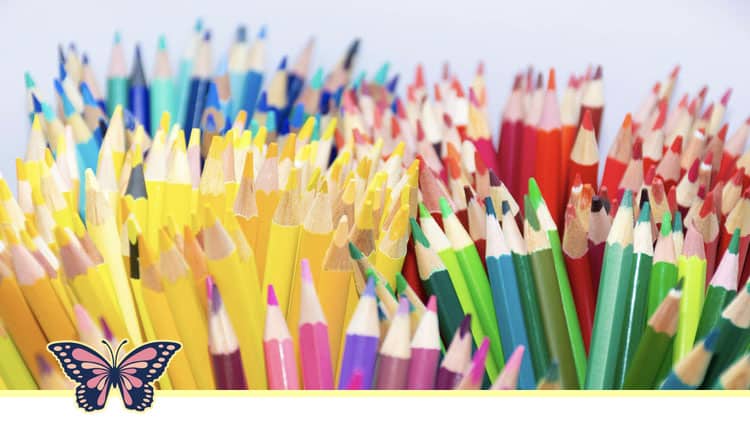
You can use colored pencils on most papers. Colored pencils will work best on paper and have a little texture/tooth (peaks and valleys).
- Holding pencil. Try holding the pencil the same way you would when writing a letter. I find that I can get the best coverage when I hold the pencils this way.
- Circular strokes. When you color, try using circular strokes vs. back-and-forth strokes. The circular stokes will create a smoother application, a better blending of colors and no streak marks. When you use the back-and-forth stroke, you will constantly go against the grain of the paper and create uneven color. [TOC]
- Apply appropriate pressure. Begin with lighter strokes and layers when you start. Apply heavier pressure as needed to help in increasing the coverage. The layered colors will blend more efficiently and effectively with lighter strokes. Try to avoid using intense pressure on textured paper because you will notice that your pencil lead will be used up quickly. In addition, you can damage the paper’s surface unless you wish to apply a burnishing effect.
- Quality pencils. When you are using good-quality paper, try to use good-quality colored pencils. For example, Prismacolor wax-based pencils are a popular choice, and wax-based pencils are soft and blend well. As a common practice, you should consider creating a color swatch for more accurate color identification. [TOC]
- Keep pencils sharp. Keeping your pencils sharp is also important because it will improve overall control. You can sharpen the pencil mechanically, or some prefer using a blade. If the pencil is difficult to sharpen, try using course sandpaper to diminish the chance of breaking the lead. I like to wipe the pencil with a soft brush to remove any excess wax so it does not fall onto the drawing surface.
- Taking care of mistakes. If you make a mistake in coloring, consider using a kneaded rubber eraser (sticky tack) to lift the pencil color from the page.
- Removing crumbs. When coloring and seeing crumbs or excess core on the page, do not wipe it off with your hand because it will leave streaks. You can remove pencil crumbs on the paper with a soft brush or compressed gas duster. [TOC]
- Heavier paper. If you are using mixed media and blending solvents, you will need to use heavier paper (e.g., lbs, gsm) so that it will not warp. The heavy paper is also better when using various techniques like erasing and burnishing. The paper should weigh 300 grams or more. The best paper would be mixed-media or watercolor paper, which can be expensive. A more affordable option is Bristol paper, which is perfect if you do not apply any wet media.
- Start slow with colored paper. If you are new to working with colored pencils on paper, consider getting single sheets. It is more affordable to experiment with paper types without spending too much. You can save some money if you find a sketchpad with many sheets. Paper products provide 50 sheets or more, which can sometimes be used on both sides. You can also get paper pads that are tape-bound or sketchbooks that are wire-bound. Illustrating boards or watercolor blocks are better for wet media or other techniques. You do not have to be concerned with the paper warping, and it is easy to remove paper sheets once you are done. [TOC]
If you like this article, please share it with others.



